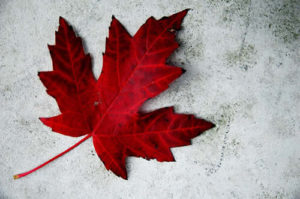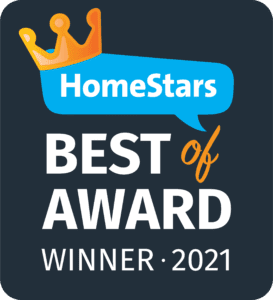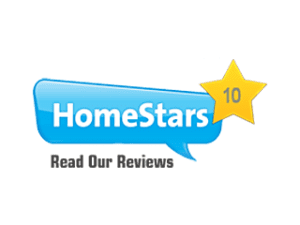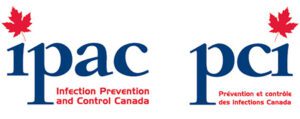Mold Removal Guidelines
MOLD REMOVAL GUIDELINES
INTRODUCTION
We’ve provided an outline below that offers a brief history of how and when mold began to be taken seriously as a hazard to peoples health. We hope this will give you a sense of what types of issues you may see when facing a mold issue head on and some of the best practices our industry prescribes.
-
Introduction
-
Description
-
Application
-
Emerging Issues
Introduction
Before the early 1990s, many people in Canada and the United States were unaware of the risks to residential homeowners, tenants and occupant / worker health caused by mold contamination and cleanups. Therefore, cleanups were often done without adequate safety precautions. In Canada and the United States in 1993 a major milestone in changing attitudes came with the issuance of the New York City Department of Health (NYC DOH) Guidelines on the Assessment and Remediation of Stachybotrys chartarum in Indoor Environments.
These guidelines were developed by an expert panel that had been convened by the NYC DOH to address health concerns related to mold exposure. Health problems reported by staff of the New Museum of Contemporary Art in New York City had fueled a landmark legal case in mold contamination. The NYC DOH guidelines were partially based on the mold remediation specifications developed for the museum. During the same time, the specifications were adapted for two buildings in Florida with mold problems, the Martin County Courthouse complex and the Polk County Courthouse.
The NYC DOH guidelines of 1993 focused on Stachybotrys chartarum because this was the fungal species most prevalent in the New Museum case, and it was the one suspected of causing the health problems. However, the guidelines were applicable to assessment and remediation of all fungal species, because all molds are allergenic, and many more than just Stachybotrys chartarum can produce adverse health effects in humans. Unfortunately, some building owners and operators took the title literally and questioned the need to deal with mold problems that involved other species. The NYC DOH decided to revise the guidelines in 2000, encompassing all fungi and updating the guidelines with new knowledge gained since 1993. The revision is entitled Guidelines on the Assessment and Remediation of Fungi in Indoor Environments.
The U.S. Environmental Protection Agency (EPA) issued Mold Remediation in Schools and Commercial Buildings. The document includes a disclaimer clarifying that it presents recommendations, not regulations. Nevertheless, the NYC DOH and EPA guidelines have become the standard of care for mold assessment and remediation in buildings.
HEALTH CONCERNS
One of the difficult challenges facing medical professionals involved with mold-related health problems is establishing a dose-response relationship. Because airborne mold is ubiquitous in indoor and outdoor environments, it is difficult to assess how much mold causes adverse health effects. Adding to this complexity is the fact that health responses and sensitivities vary in the human population and that other stresses can cause health effects similar to mold exposure.
Most data on health problems from mold come from animal ingestion studies (such as horses eating moldy hay) or from high doses of human exposure (such as farmers pitching the moldy hay or silage). Less is known about lower dose exposure over time, such as occupants in buildings where mold is contained in wall cavities. Epidemiological studies by occupational physicians in landmark cases (the Polk County Courthouse, for example) have shown links between occupant exposure to higher than normal concentrations of mold and to atypical indoor mold types and development of asthma and other immune-response diseases. However, the dose that causes these problems is not easily determined.
All molds can cause health problems, since they produce allergens and irritants that cause reactions in humans. Some molds also produce toxins (mycotoxins) as part of their defense mechanisms. What is important to know in dealing with remediation of mold is that it remains allergenic and toxigenic even in a non-viable state. Therefore, it is not enough to kill mold by, for example, applying a biocide like bleach; the mold and the materials on which it is growing need to be removed from the indoor environment. Such removal work must be contained, like asbestos removal, to minimize contamination of other parts of the building. Considering the cost and disruption of such remediation activities, it is easy to see that the best policy is preventing mold in the first place by control of moisture.
Another consideration in the control of mold growth is what it does to the building. Uncontrolled mold growth can cause aesthetic problems, such as discoloration and odors, deterioration of building materials, and, in wood frame buildings, structural failure.
DESCRIPTION
The highest priority during a mold remediation should be to protect the health and safety of the building occupants, the investigation team, and the remediation crew. A moisture and mold remediation plan must be developed, which includes steps to remove the source of the moisture, use of appropriate personal protective equipment (PPE) by investigators and remediators, and steps to contain and remove building materials contaminated by mold.
ASSESSING THE EXTENT OF THE MOLD PROBLEM
Knowing the extent of mold growth is important because it establishes the levels of remedial actions. The greater the extent of mold, the greater the need for engineering controls, such as containments under negative pressure, during remediation. Both the EPA and NYC DOH guidelines establish their remediation action guidelines based on the extent of mold contamination. However, there is no single tool that can measure extent of mold.
VISUAL ASSESSMENT
If the mold contamination is visible, visual assessment is the most important method of determining the extent of mold contamination in a building. Fiber-optic borescopes with a high-power light source are sometimes useful in surveying hidden spaces, such as wall cavities; however, they are often difficult to use because of visual obstructions, such as insulation, within the cavities. A visual survey can be supplemented with some direct reading measurement tools, such as moisture meters, infrared thermography, and temperature/relative humidity meters. Destructive testing such as cutting out small sections of gypsum wallboard to examine the cavity side can be important as well. However, information from these measurements should be considered as aids supporting visual assessment and professional judgment.
Along with a visual survey, interviewing occupants and maintenance personnel can aid in determining the extent of mold contamination. These eye-witnesses can provide valuable information on past water incursion events (when, where, what type, and for how long). They may also know where mold has been covered with paint or other coatings.
Sampling for mold, especially air sampling, is generally not helpful in determining the extent of mold. In fact, the possibility of false negatives (and sometimes false positives) can confound the assessment methodology. In addition, results from sampling are often misinterpreted by the lay person, and may lead to unwarranted panic by building occupants. Generally, if you can see mold, you don’t need to sample it to determine the extent, and if you cannot see mold, air sampling will not reveal the extent of hidden mold.
SAMPLING FOR MOLD
Mold sampling, with analysis by a laboratory accredited under the American Industrial Hygiene Association Environmental Microbiology Proficiency Analytical Testing program, may be needed in the following cases:
- When the medical professionals involved require the information to diagnose the occupants’ health problems and/or to determine if a link exists between the health problems and exposure.
- To establish remediation protocols, including clearance criteria. It is often useful to know the kinds of molds that are causing contamination so that those particular “marker” fungi can be looked for during clearance sampling (if clearance sampling is justified). If post-remediation clearance sampling indicates a significant reduction in the marker fungi to a predetermined goal, then one can assume the remediation has been successful (as long as other post-remediation clearance criteria are met).
- When required for litigation or insurance recovery, such as to confirm that the visually observed “mold” is indeed mold or to help establish cause. The cause of mold, if not readily apparent, can sometimes be deduced from the species identified in bulk samples of materials analyzed by culture method. For example, presence of hydrophilic (water-loving) fungi (e.g., Stachybotrys chartarum) in bulk samples is indicative of liquid water incursion, such as rainwater flooding or pipe bursts. The presence of xerophilic (dry-loving) or xerotolerant (dry tolerant) species, including some Penicillium and Aspergillus species, especially if the samples were collected significantly above floor level, is more likely indicative of high relative humidity problems.
- To determine if hidden mold exists. While sampling cannot determine the extent of hidden mold, dust or carpet dust sampling may be able to determine if hidden mold exists, if it is not readily apparent on visible surfaces. For example, elevated concentrations of a few species of atypical mold in carpet dust may indicate either growth in the carpet (if the carpet has been wetted) and/or mold contamination in hidden locations. In the latter case, the carpet dust can contain elevated concentrations of atypical fungal spores that have come from another source in the building and settled out from the air into the carpet. Air sampling is another methodology for determining if hidden mold exists, but it is subject to false negatives. That is, mold spores may not be present in the air, even if mold is growing on building materials. Air sampling for microbial volatile organic compounds (MVOCs), which are responsible for mold odors, is a newly developing method for determining if hidden mold exists; however, it is still being developed, and firm correlations may not yet be established. In any case, if you can detect mold odors by smell, mold is present somewhere in the building.
Critical to the success of mold sampling is first establishing a useful sampling strategy. Determine what you want to know, and decide how to deal with unexpected answers. The latter concern is important in determining whether sampling should be performed at all, especially if the information can become public record or has the potential for being used during litigation.
APPLICATION
Mold remediation strategies have been developed from the work practices used in asbestos abatement. These practices work well for containing airborne mold that is aerosolized during demolition and for the protection of workers performing the remediation. The biggest difference between mold and asbestos abatement is that, unlike asbestos in work, water must not be used in mold work to control airborne particulate. This would like be adding fuel to the fire.
The assessment of the extent of mold and the development of mold remediation plans should generally be done by experienced professionals. The mold remediation should then be done by experienced and certified mold remediation professionals. A number of organizations offer certification programs for professionals involved in assessing and remediating mold problems, including the American Board of Industrial Hygienists (ABIH), and the American Council for Accredited Certification (ACAC). For ventilation systems, the National Air Duct Cleaners Association (NADCA) provides a certification program.
PLANNING MOLD REMOVAL STRATEGIES
The EPA and NYC DOH documents provide action levels for types of containment and worker protection based on the amount of surface area affected by mold. The EPA document sets these action levels for mold growth caused by clean water. Mold caused by polluted water, including sewage backups, may require a different set of procedures and worker protection. The three EPA action levels are set at affected areas of less than 10 square feet, between 10 and 100, and greater than 100 square feet.
In addition to the size of the affected area, the type of material to be remediated needs to be considered. Generally, materials that are highly porous, such as books, gypsum wallboard and fabric covered chairs, will need to be discarded if heavily contaminated. This is because the fungal hyphae can become entwined in the matrix of the porous material, making complete removal impossible. Nonporous metals and plastics can generally be cleaned, because the mold growth on these surfaces is usually growth on surface dust. However it’s also possible for mold to grow on painted nonporous surfaces. In any case, a key point is that biocides will generally not solve the mold problem, especially for porous and semiporous materials. The biocides may not reach all of the mold growth, and even if they do, mold remains allergenic and toxigenic after it dies. Complete removal of the mold-contaminated porous material is the best strategy.
In addition to the amount of mold contamination and the type of material, the population of the building must be considered when developing the remediation plan. Sensitive populations include those with health deficiencies such as people with immune deficiencies. Children in day care centers or senior citizens in nursing homes should also be considered sensitive populations. For application to such sensitive facilities, the requirements for clearance and verification of removal of mold contaminated materials must be much more stringent than typical commercial projects.
Generally, remediation strategies include the following:
- Installing containments, generally using 6-mil polyethylene sheeting, to separate the mold abatement work area from other uncontaminated or occupied areas of the building. Generally, containments are placed under negative pressure relative to the rest of the building using air filtration devices (AFDs) equipped with high-efficiency particulate air (HEPA) filters. The air is discharged outside the containment, usually to the outdoor atmosphere. Air handling systems must be isolated from the work area.
- Equipping remediation workers with PPE. The degree of protection can vary depending on the size of affected area, but at a minimum the equipment should include a respirator, gloves, and goggles. For larger containment work, workers should have full skin, respiratory and mucous membrane protection, such as that provided by full Tyvek suits, gloves and full-face respirators with HEPA filter cartridges. Workers in containment are subject to very high concentrations of aerosolized mold spores, and other mold parts, so full protection is advised. Skin protection is important because some molds can cause dermatitis, and some mold toxins can be absorbed through the skin. Workers wearing PPE must have proper training in its use, medical clearance, and fit testing.
- Providing proper tools for workers, including HEPA-filtered vacuums. Ideally, they should be able to remove mold-contaminated gypsum wallboard in large pieces to minimize aerosolizing mold spores.
- Sealing removed material in doubled 6-mil polyethylene bags or wrapped in polyethylene sheeting, while in the containment, and then disposing in a landfill for composting, not for recycling.
- Cleaning after removal work, usually after a dust settlement period, using HEPA vacuums and damp wiping with clean cloths moistened with clean potable water or a mixture of 9 parts water to 1 part bleach. The HEPA vacuuming and damp wiping should not be construed as methods to remove mold growth. However, they can remove the settled dust that contains loose mold spores aerosolized during demolition.
At Maple Leaf Mold we follow these very same standards as outlined above and as required by IICRC S520 AMRT Mold Removal Standards and Protocols.
Cleaning ventilation systems contaminated with mold growth generally requires isolation of the portion of the system being cleaned, followed by agitation and HEPA vacuuming of the contaminated area of the system. More specific procedures for cleaning ventilation systems are presented in ACR, The NADCA Standard for Assessment, Cleaning & Restoration of HVAC Systems.
IMPLEMENTING MOLD REMOVAL STRATEGIES
Provide the mold remediation strategy in a written work plan or specification, with all duties and responsibilities clearly noted.
- Select a qualified contractor to perform the work. At Maple Leaf Mold we carry IICRC training and certified removal teams made up of WDT and AMRT technicians. All personnel performing mold remediation have specific training/certification for mold inspections / removals.
- Continue to communicate remediation plans and strategies to the building occupants. Vacate the building during remediation if occupant health is at risk or if remediation work will disrupt normal use.
- You must prepare for the possibility of hidden mold that will alter the cost and schedule of the remediation. Generally, in most mold remediation work, one can expect to find mold that was hidden by construction and revealed during demolition. It is also possible to find hidden defects and/or code violations that will need to be corrected.
- Establish clearance criteria. Clearance sampling may be required for informing medical or legal consultants. In any clearance plan, visual inspection is the most important element. The clearance criteria must be in the work plan, especially if the work will be bid.
- Identify and repair the source of water/moisture intrusion as soon as possible. Confirm that the moisture source has been repaired (Note: This may require water testing the building envelope, if the source was rainwater, or modifying the HVAC system if the source was HVAC related.)
- Perform post-remediation inspections for the possibility of continued mold growth. A building that has suffered mold contamination can easily experience regrowth of mold because it is impossible to remove all the microscopic mold spores. Any post-remediation water incursions should be immediately controlled, dried, and cleaned up.
- Prepare an operations and maintenance manual that specifically addresses post-remediation care of the building, including action plans for prompt handling of water incursions.
EMERGING ISSUES
CURRENT AND FUTURE RESEARCH AND DEVELOPMENT
Currently much research on the health effects of mold in the indoor environment is being developed. However, no definitive standards on the amount or types of mold that may trigger symptoms in individuals is available at this time.
Some of the health reactions thought to be from exposure to mold, including through inhalation and direct contact, are:
- Irritant effects such as burning sensations in eyes, skin, nose, throat, and lungs
- Allergic reactions such as sneezing, runny nose, red eyes, and skin rash (dermatitis)
- Asthma attacks in sensitized people, or increased asthma symptoms in non-sensitized people
- Organic Dust Toxic Syndrome (ODTS), a flu-like illness that can be caused by high levels of exposure to small pieces of the cell walls of molds, called glucans, usually occurring in agricultural settings
- Hypersensitivity pneumonitis, an uncommon disease that resembles bacterial pneumonia
- Opportunistic infections in people with weakened immune systems (such as renal and bone marrow transplant patients). Such infections include aspergillosis, infection and growth of Aspergillus fumigatus in the lungs of immune-compromised individuals
- Pulmonary hemosiderosis, an uncommon childhood lung disease that involves bleeding in the lungs. There is some data that suggest that exposure to toxins from molds such as Stachybotrys chartarum can cause this disease, which was responsible for a number of infant deaths in the Cleveland, Ohio area in the 1990s. However, medical research has not confirmed the link between Stachybotrys chartarum exposure and the Cleveland outbreak.

Maple Leaf Mold Inc. is a certified mold / asbestos removal and biological disinfection / air analysis company located in Toronto that uses certified IICRC technicians for all testing and remediation projects.
We are a professionally licensed firm experienced in testing, verifying and removing Mold / Asbestos / Lead and other environmental contaminants as well as providing disinfection services to control and kill biological contaminants.
Call 416-254-7256 to talk with us about your issue anytime.



